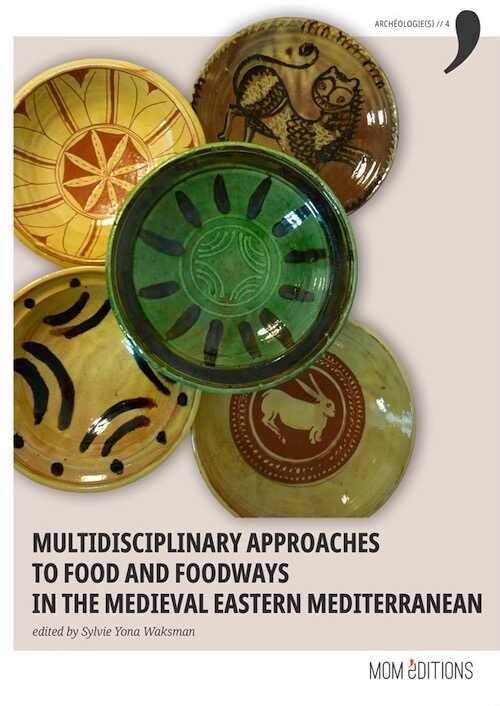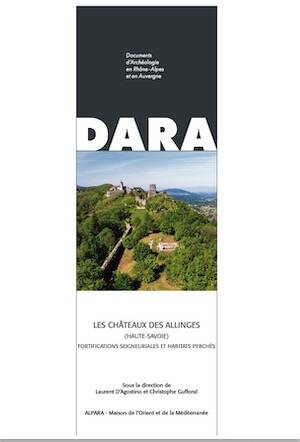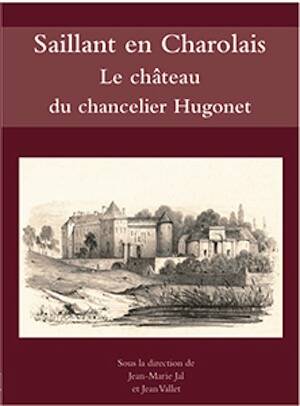- Search
- Advanced search

Multidisciplinary approaches to food and foodways in the medieval Eastern Mediterranean, 2021, 508 p. -
Dans ce volume, archéologues, archéomètres et historiens contribuent par différentes approches à un domaine de recherche émergent : les pratiques alimentaires en Méditerranée orientale médiévale. Il présente les résultats du programme ANR POMEDOR « Populations, poteries et alimentation en Méditerranée orientale médiévale », qui abordait l'évolution de ces pratiques lors de périodes de transition, telles que les croisades ou les conquêtes turques, principalement au travers d'études archéologiques et archéométriques de céramiques. Cet ouvrage couvre un champ plus large, incluant l'archéozoologie, l'archéobotanique, l'anthropologie biologique, l'étude des structures archéologiques, des textes et de l'iconographie. Enfin, il dévoile les recettes conçues pour un dîner « byzantin » clôturant le programme POMEDOR, organisé à l'Institut Paul Bocuse.
Sommaire :
Cyprus and the Levant
- Recipe: Bouillon léger de poissons et fruits de mer (monokythron) (S. Grainger)
- Du lac de Limassol aux tables de Nicosie : pêcheries et consommation de poisson à Chypre sous la domination latine (1191‑1570) (P. Trélat)
- Les tavernes (canutes) comme instruments de contrôle économique et social dans le royaume de Chypre aux XIIIe‑XVIe siècles (G. Grivaud)
- Food, wine and the Latin clergy of Lusignan Cyprus (1191‑1473) (N. Coureas)
- Archaeological and archaeometric investigations of cooking wares in Frankish and Venetian Cyprus (R. Smadar Gabrieli, S. Y. Waksman, A. Shapiro, A. Pecci)
- The impact of the Crusades on ceramic production and use in the southern Levant: Continuity or change? (E. J. Stern, S. Y. Waksman, A. Shapiro)
- Between oven and Tannur: “Frankish” and “indigenous” kitchens in the Holy Land in the Crusader period (E. Yehuda)
- Ceramic evidence for sugar production in the 'Akko plain: Typology and provenance studies (A. Shapiro, E. J. Stern, N. Getzov, S. Y. Waksman)
- Some thoughts on sugar production and sugar pots in the Fatimid, Crusader/Ayyubid and Early Mamluk periods in Jordan (R. Jones, A. Grey)
Byzantium and beyond
- Recipe: Quail pie & Mixed pulses (S. Grainger)
- “What is plate and cooking pot and food and bread and table all at the same time?” (I. Anagnostakis)
- Dogs, vultures, horses and black pudding: Unclean meats in the eyes of the Byzantines (B. Caseau)
-Ceramic vessels and food consumption: Chalcis as a major production and distribution center in the Byzantine and Frankish periods (N. D. Kontogiannis, S. S. Skartsis)
-Corinth: beyond the forum. Use of ceramics, social implications and settlement pattern (12th‑13th centuries) (E. Tzavella)
- Eating in Aegean lands (ca 700-1500): Perspectives on pottery (J. Vroom)
- The composition of church festive meals in a medieval Christian community in the southern Crimea, based on ceramics and faunal materials (I. Teslenko)
- A pottery production for whom and for what target? Thoughts on pottery finds from Kadıkalesi (Kuşadası) excavation (Z. Mercangöz)
- L'approvisionnement des villes d'Orient par les marchands italiens (XIIIe‑XVe siècle) (M. Balard)
- Animals in food consumption during the Byzantine period in light of the Yenikapı metro and Marmaray excavations, Istanbul (V. Onar)
- Food production and consumption in the Byzantine Empire in light of the archaeobotanical finds (A. E. Reuter)
- The biocultural model applied: Synthesizing research on Greek Byzantine diet (7th‑15th century AD) (C. Bourbou)
- Changing people, dining habits and pottery technologies: Tableware productions on the eve of the Ottoman Empire in western Anatolia (J. Burlot, S. Y. Waksman, B. Böhlendorf‑Arslan, J. Vroom)
- Ottoman period sources for the study of food and pottery (15th‑18th centuries) (F. Yenisehirlioglu)
Trading goods, trading tastes
- Recipe: Omelette soufflée & Sweet salad (S. Grainger)
- One amphora, different contents: The multiple purposes of Byzantine amphorae according to written and archaeological data (E. Todorova)
- Residue analysis of medieval amphorae from the Eastern Mediterranean (A. Pecci, N. Garnier, S. Y. Waksman)
- Byzantine amphorae of the 10th-13th centuries from the Novy Svet shipwrecks, Crimea, the Black Sea: Preliminary typology and archaeometric studies (Y. Morozova, Sy. Y. Waksman, S. Zelenko)
- The transportation of amphorae, tableware and foodstuffs in the Middle and Late Byzantine period: The evidence from Aegean shipwrecks (G. Koutsouflakis)
- Food habits and tableware in Venice: The connection with the Mamluk Sultanate (V. Vezzoli)
Référence : 53741.
English, French
65,00 €
In the same Epoch




